The Best (And Worst) Ravenclaw Traits
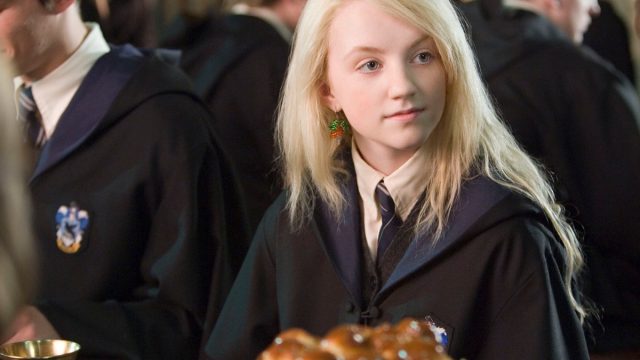
Each of the Hogwarts houses outlined in the Harry Potter series has a distinct set of traits. There are the cunning Slytherins, loyal Hufflepuffs, brave Gryffindors, and finally, the witty Ravenclaws. If you’ve taken the test and the Sorting Hat put you in Ravenclaw, it’s likely because you’ve been told you’re book-smart or quick with a biting joke. But while Ravenclaw students pride themselves on their intelligence (sometimes to their detriment), it’s far from their only quality. Read on to discover the best and worst traits of a Ravenclaw.
RELATED: The Best (And Worst) Hufflepuff Traits.
What Does It Mean to Be a Ravenclaw?

Ravenclaw house was founded by Rowena Ravenclaw, a brilliant witch renowned for her wit and recognized by her signature enchanted diadem. Rowena sought out the best and brightest Hogwarts students for her house, with many Ravenclaws going on to become some of the greatest inventors and innovators in the Wizarding World.
The house colors are blue and bronze, and the house is signified by the eagle. The Ravenclaw common room is located at the top of Ravenclaw Tower, where students can access their own library and study with a view of the Great Lake. What really speaks to Ravenclaws’ affinity for learning, however, is how they enter their common room: Students have to correctly answer a riddle posed by an enchanted knocker.
RELATED: 38 Harry Potter Spells Every Wizard and Witch Should Know.
The Best Ravenclaw Traits

Ravenclaws are intelligent.
First and foremost, Ravenclaws are smart. While craving knowledge is essentially the main criterion to be sorted into this house, certain characters stand out. Filius Flitwick, the Charms master at Hogwarts, is well known for his wit. A top student during his time at Hogwarts, he later taught the enchanted portraits at Hogwarts to recognize the face of Sirius Black when they were worried the Azkaban prisoner had infiltrated the castle.
Ravenclaws think outside the box.
Being able to solve a riddle is definitely a sign of a creative thinker, which is something Ravenclaws are known for. Flitwick, again, displays this, as does Luna Lovegood, one of Harry Potter’s closest friends. Luna is pretty much the epitome of a creative thinker, always talking about Nargles, Wrackspurts, and other magical creatures her friends aren’t familiar with.
Ravenclaws, as a whole, can think outside of the box and use both logic and reason when problem-solving, which is why some suggest that Hermione Granger should have been sorted into this house as opposed to Gryffindor. (However, Hermione prioritizes bravery and loyalty over wit and intelligence, making her a good fit for her house.)
Ravenclaws are original.
Ravenclaws are original and unique—and both Luna and Professor Sybil Trelawney display these traits. While Luna marches to the beat of her own drum, so does Professor Trelawney, who teaches Divination. She is certainly eccentric and decorates her classroom accordingly: In Harry Potter and the Prisoner of Azkaban the room is described as “a cross between someone’s attic and an old-fashioned tea shop.” When Harry first sees her, he immediately notices that she is different, saying his first impression “was of a large glittering insect.”
Ravenclaws ask the right kind of questions.
Going back to Luna, she knows the right kind of questions to ask. When Harry is asking about a significant item that may have belonged to Rowena, she says, “Well, there’s her lost diadem. I told you about it, remember, Harry? The lost diadem of Ravenclaw.” While others mock her because Rowena Ravenclaw’s diadem has been “lost” for centuries, Luna sticks by her hypothesis—and she ends up being right.

Ravenclaws are wise.
While acing tests and reciting facts are certainly Ravenclaw traits, witches and wizards in this house are also wise. Luna is always offering Harry sage (if a little offbeat) advice, and Professor Flitwick recognizes when it’s time to speak up and when it’s best to take a back seat. Rather than protest Dolores Umbridge when she comes in to observe his lesson in Harry Potter and the Order of the Phoenix, it’s said that Flitwick “treated her like a guest” and her presence “didn’t seem to bother him at all.” He didn’t allow her to ruffle his feathers, as she was apt to do with others, and was wise enough not to engage.
Ravenclaws are confident leaders.
While Flitwick was wise for not tussling with Umbridge, his decision to hold back is also because he’s confident in his teaching abilities and intelligence. This self-assurance is another Ravenclaw trait, which both Luna and Gilderoy Lockhart possess, too. Say what you will about Lockhart and his pompousness: He was certainly confident in himself—and while he lied about his successes, he knew that he was talented enough with memory charms to get away with it!
Ravenclaws are brave.
Even if they say they do, Gryffindors don’t have a monopoly on bravery. Ravenclaws exemplify bravery as well. Cho Chang, Harry’s crush who briefly dates Cedric Diggory during the Triwizard Tournament, is a member of Dumbledore’s Army, fighting alongside her fellow students during the Battle of Hogwarts. She is also not afraid to stand up for her friend and fellow Ravenclaw, Marietta Edgecombe, even when Marietta makes a mistake by betraying Dumbledore’s Army. Luna is unfailingly brave as well, as one of the six students to face off against Death Eaters in The Order of the Phoenix.
Ravenclaws have a sense of humor.
Ravenclaws are not always curled up with a book or working on an essay. Their wit means that they are often quick with a joke—and they may make one without you even realizing it. When the Weasley twins set off fireworks in different classrooms in The Order of The Phoenix, Flitwick lays on the sarcasm after Umbridge puts them out in his classroom.
“‘Thank you so much, Professor!’ said Professor Flitwick in his squeaky little voice. ‘I could have got rid of the sparklers myself, of course, but I wasn’t sure whether I had the authority…’ Beaming, he closed his classroom door in her snarling face.”
RELATED: These Harry Potter Trivia Questions Will Test Your Wizard Knowledge.
The Worst Ravenclaw Traits
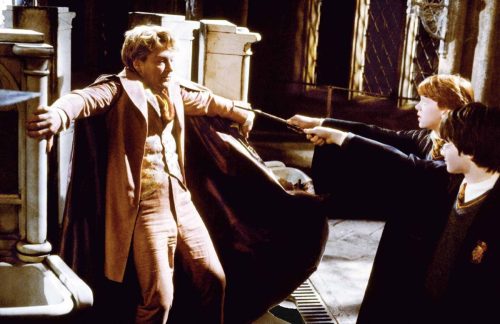
Ravenclaws can be arrogant.
Because they’re so smart, Ravenclaws can be somewhat arrogant. Lockhart, of course, is the prime example of this. In Harry Potter and the Chamber of Secrets, Lockhart constantly boasts about his (fabricated) successes and never misses a chance to promote himself or sign an autograph. He is so vain he even adorns his classroom with portraits of himself.
Rowena also reveals her pride when—fueled by a deep sense of shame—she refuses to admit that her daughter betrayed her.
Ravenclaws can be deceptive.
Deceptiveness stands out as an undesirable Ravenclaw trait, largely due to Quirinus Quirrell, who makes it through the entire first book before it’s revealed that he’s working with Lord Voldemort. Helena Ravenclaw also deceives her mother by stealing her diadem and running away—and initially deceives Harry by telling him she can’t help him locate the “lost” item.
Lockhart, too, is sneaky, having tricked his fanbase and the wizarding community into thinking he’d performed heroic acts. In reality, he stole the stories from other witches and wizards, and wiped their memories so they couldn’t come forward with the truth.
Ravenclaws can be insecure.
On the other end of the spectrum, Ravenclaws are sometimes insecure. Professor Quirrell was timid as a child, a trait he was teased for. This fostered a feeling of disdain for the magical society, prompting him to turn to the Dark Arts and eventually conspire with Lord Voldemort. Moaning Myrtle, a ghost who haunts the second-floor girls’ bathroom at Hogwarts, is another Ravenclaw who’s known to be exceedingly self-conscious.
And Helena was so desperate to be loved and insecure about feeling inferior to her mother that she ended up putting her trust in a young Tom Riddle.
Ravenclaws can be aloof.
While they are sometimes boastful, not all Ravenclaws are outspoken about their achievements—or anything, for that matter. Luna is content with being a bit of a loner, and her fellow Ravenclaw, Padma Patil, is also known to be on the shy side.
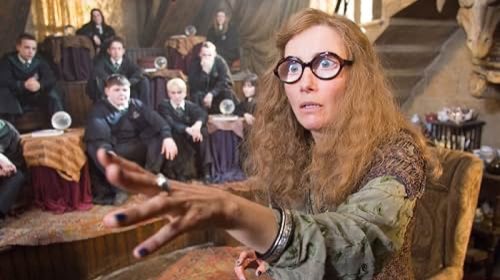
Ravenclaws are sometimes spiteful.
Because Ravenclaws can be insecure and deceptive, they have a tendency to be spiteful. After being bullied (and murdered), Moaning Myrtle particularly relishes in unfortunate things happening to students, specifically when Hermione Granger turns half-human and half-cat after mistakenly adding cat hair to Polyjuice Potion. Helena Ravenclaw was jealous of her mother’s intelligence and her importance, which prompted her to steal her prized diadem and run away from Scotland.
Ravenclaws don’t always have control over their emotions.
Ravenclaws tend to struggle with their emotions as well. Moaning Myrtle—who earned her nickname at Hogwarts due to her loud crying—doesn’t have the best control over her feelings. Sybil Trelawney struggles with stress when being monitored closely by Umbridge. She turns to alcohol and is then unable to control her emotions, leading her to have a public breakdown when Umbridge tries to dismiss her. (It’s worth noting, however, that Umbridge certainly did her best to shake Professor Trelwaney’s confidence!)
Ravenclaws sometimes can’t distinguish between right and wrong.
For some Ravenclaws, it can be different to find the line between right and wrong. The well-known wandmaker Garrick Ollivander certainly exemplifies this early on. When Harry is at his wand shop in Diagon Alley, the wandmaker tells the young boy that He-Who-Must-Not-Be-Named did “terrible, but great” things—a strange thing to say about the man who murdered his parents.
Later on in the series, Ollivander again shows that he may respect power over what’s objectively “right.” When asked about the Elder Wand, Harry notes that Ollivander seems enthralled by the idea of Voldemort having such a powerful wand.
Ravenclaws can be disloyal.
While Luna is a shining example of loyalty, the same cannot be said of her father, Xenophilius Lovegood, who was also sorted into Ravenclaw at Hogwarts. Xenophilius is the editor of The Quibbler magazine, which is generally supportive of Harry Potter. But when Harry, Hermione, and Ron seek him out for information about the Deathly Hallows, the trio learns that Xenophilius is in the process of printing an anti-Harry edition of The Quibbler. He then summons Voldemort’s followers to capture Harry, saying that he needs to get Luna back from the Death Eaters.
RELATED: Why Daniel Radcliffe Says He’ll Never Rewatch One Particular Harry Potter Movie.
Notable Ravenclaws
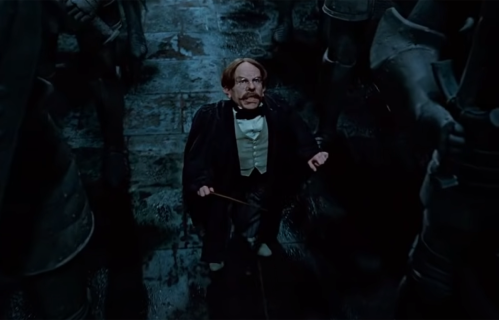
- Cho Chang: A Ravenclaw student whom Harry develops a crush on. She attends the Yule Ball with Cedric Diggory and later becomes a member of Dumbledore’s Army.
- Luna Lovegood: One of Harry’s closest friends known for her quirkiness. Other students unkindly nickname her “Loony Lovegood.”
- Rowena Ravenclaw: The founder of Ravenclaw and mother of Helena Ravenclaw. She was known to wear her enchanted diadem, which was thought to enhance the wisdom of the wear.
- Helena Ravenclaw: The daughter of Rowena and the Ravenclaw house ghost, known as the Grey Lady. Helena stole her mother’s diadem and ran away, and she was later murdered by the man who would become the Slytherin house ghost, the Bloody Baron.
- Filius Flitwick: The Charms professor at Hogwarts and Head of Ravenclaw house. Flitwick is short in stature, as he is half-goblin.
Conclusion
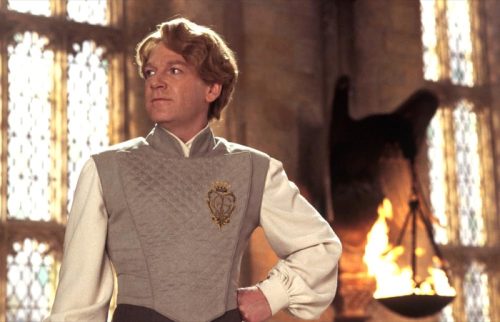
While Ravenclaws are probably the most likely to ace a test and achieve academic success, they’re also known for their bravery, creativity, and leadership. And while they can be a bit spiteful and even arrogant, they make up for it with cleverness and wit—meaning they’re great study buddies and dinner party guests.